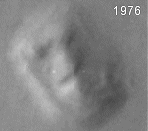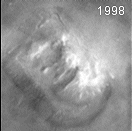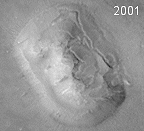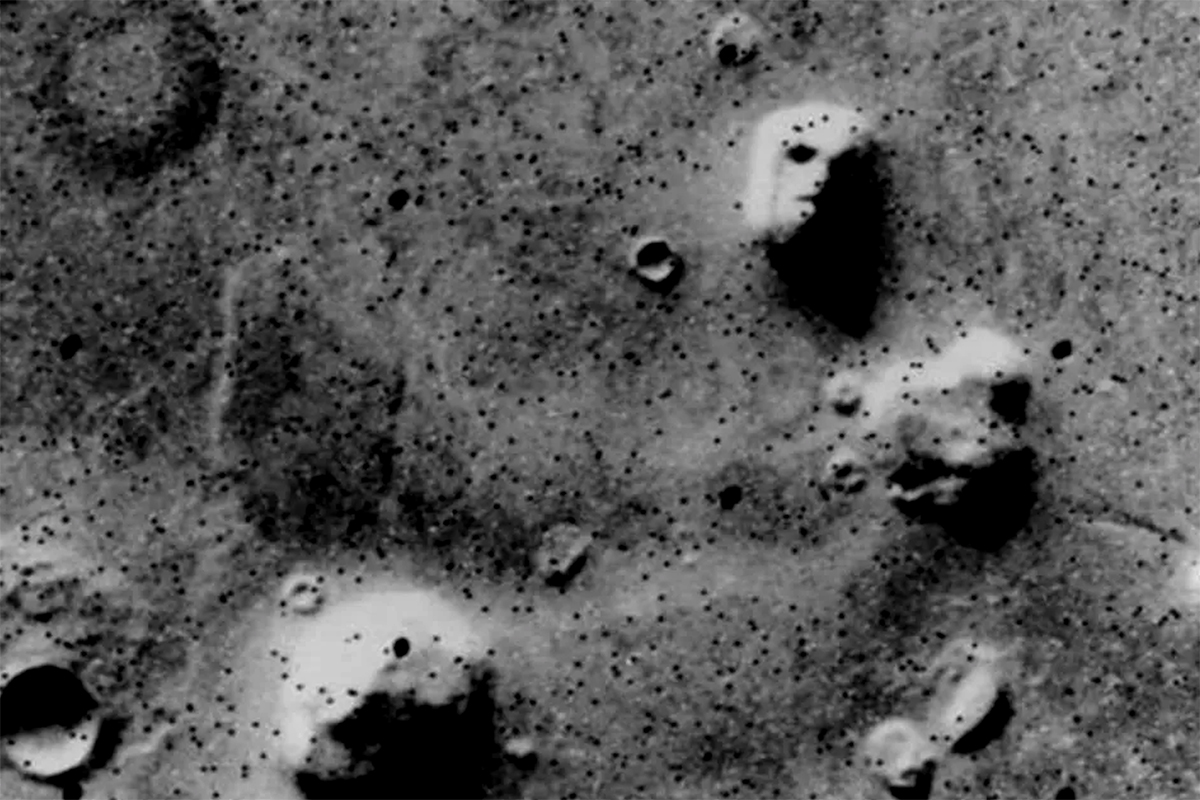History of a mystery: from 1976 to 2001
 The controversy of the moment: 1976.
The controversy of the moment: 1976.
NASA gave a brief press conference mentioning this geological feature, but scientists interpreted it as a simple play of light and shadow on a natural rock formation, giving it the appearance of a face. Despite this, many people thought that the "face" was artificial and built by a Martian civilization, and that NASA was covering up the fact. A series of surrounding structures were also highlighted, which people recognized as pyramids and remains of an ancient city. The controversy persisted for many years, and several theories and supposed alignments involved in the so-called "face on Mars" were even postulated.
 The mystery begins to be revealed: 1998.
The mystery begins to be revealed: 1998.
It was not until April 5, 1998, with the new Mars Global Surveyor probe, equipped with much more modern instruments and higher-resolution cameras, that the famous "face" would be revealed for what it was: a simple, very rugged natural formation, which in reality did not have any appearance of a face. This was made possible by photographs 10 times sharper than those taken by Viking 1, allowing a much better appreciation of the landscape. However, some pro-artificiality fans of the "face" were still not satisfied...
 The mystery is solved: 2001.
The mystery is solved: 2001.
On April 8, 2001, Mars Global Surveyor took another look at the Cydonia region, this time in very favorable weather (the 1998 observation was haze-covered). This time, the camera's highest resolution was used, with each pixel covering an area of 1.56 m. The very impressive result showed that the supposed "face" was nothing more than a collapsed hill-like formation, with no artificial appearance. When compared with the 1998 images and those from 1976, the difference is notable and reveals that any doubts that may have existed were only due to the images not being sufficiently sharp and leaving room for the imagination.


